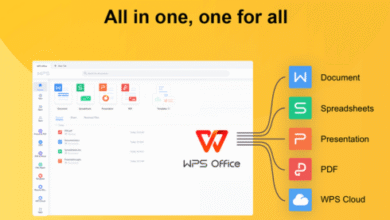Proven Web Design Tips from Dallas Restoration Agencies for Boosting Client Leads

Creating a strong online presence is critical for restoration businesses looking to attract new clients. A well-designed website not only improves brand credibility but also drives qualified leads. Many agencies emphasize the importance of tailoring websites specifically to restoration services, and a Dallas Restoration Web Design Agency can serve as a model for how to achieve this effectively. Below are proven strategies that restoration companies can implement to maximize their web design efforts.
Prioritize Clear Navigation and User Experience
When visitors land on a restoration website, they’re usually in urgent need of help. A confusing or cluttered layout can cause them to leave quickly. According to Thrive Internet Marketing Agency, clear navigation ensures that users can find services, contact details, and emergency assistance without frustration.
How to implement:
- Place key services (water damage, fire damage, mold remediation) prominently in the top navigation menu.
- Add a fixed “Call Now” button that is visible on every page for immediate contact.
- Use simple drop-down menus to avoid overwhelming users with too many options.
Example: A Dallas-based restoration company revamped its site by simplifying navigation and adding a bold, red “24/7 Emergency Services” button. This small change increased inbound calls by over 20%.
Showcase Trust with Visual Proof
Restoration is a trust-heavy industry. Clients want to see before-and-after photos, certifications, and testimonials. Incorporating visual proof reassures potential clients of a company’s credibility.
How to implement:
- Create a dedicated “Our Work” gallery with before-and-after project images.
- Place client testimonials near service descriptions for immediate impact.
- Include badges from certifications such as IICRC or BBB accreditation on the homepage.
Example: One restoration agency displayed high-resolution before-and-after images alongside Google review ratings. This transparency helped them double lead conversions within three months.
Optimize for Local SEO Visibility
Since restoration services are location-driven, ranking in local search results is crucial. Web design plays a big role in SEO by structuring pages for search engines and local users.
How to implement:
- Add location-based service pages (e.g., “Fire Damage Restoration in Dallas”).
- Embed Google Maps on the contact page with clear service area coverage.
- Optimize meta titles and headers with city-specific keywords.
Example: A restoration company targeting multiple Texas cities created dedicated landing pages for each service area. Within six months, their site ranked in the top three results for most service-related searches in Dallas.
Highlight Emergency Response Options
Speed matters in emergencies. Websites should communicate availability and response time upfront. This reassures clients that help is just a call away.
How to implement:
- Add a 24/7 emergency hotline displayed at the top of every page.
- Use contrasting colors (red or orange) for urgent service buttons.
- Incorporate a live chat feature for quick inquiries.
Example: A restoration firm integrated a chatbot that instantly asked, “Do you need emergency help?” This interactive feature generated 30% more lead inquiries after launch.
Build Mobile-First Designs
Many clients search for restoration services from their phones in urgent situations. A mobile-friendly design ensures seamless navigation and faster response.
How to implement:
- Use responsive design so the site adapts to all screen sizes.
- Compress images for faster loading on mobile networks.
- Simplify mobile menus and make call buttons one-tap accessible.
Example: After optimizing for mobile, one Dallas restoration website reduced bounce rates by 40% because users could easily call or request quotes directly from their smartphones.
Incorporate Strong Calls to Action (CTAs)
CTAs guide users to take the next step—whether that’s requesting a quote or calling for help. Without strong CTAs, potential leads may exit without taking action.
How to implement:
- Place CTAs above the fold and repeat them across pages.
- Use action-driven text like “Request Help Now” instead of generic “Submit.”
- Ensure CTA buttons are large, contrasting, and clickable.
Example: A company that redesigned its homepage with bold CTAs such as “Get Immediate Water Damage Help” saw a 35% increase in form submissions.
Use Educational Content to Build Authority
Informative blogs, guides, and FAQs build trust and position restoration agencies as industry leaders. Educational content not only supports SEO but also reassures clients that they’re choosing experts.
How to implement:
- Write blogs on common issues like “What to Do After a Flood.”
- Create downloadable emergency checklists to add value.
- Use FAQs to answer urgent questions directly.
Example: A restoration business launched a blog series on seasonal storm preparedness. These articles ranked well locally and drove a steady stream of organic leads.
Conclusion
Restoration agencies can dramatically boost client leads with strategic web design. From clear navigation and mobile optimization to strong CTAs and educational content, every element contributes to building trust and driving conversions. By learning from the practices of a Dallas Restoration Web Design Agency, businesses can transform their websites into powerful lead-generation tools.




